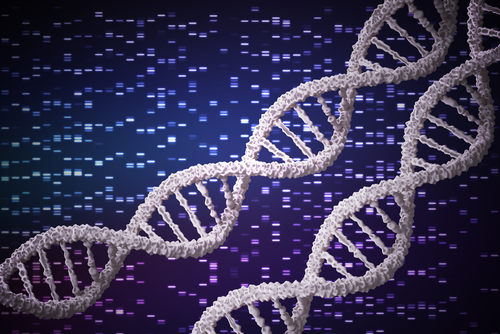2 DSE Gene Mutations Newly Identified, Linked to Musculocontractural EDS

Two newly identified mutations in the DSE gene are associated with musculocontractural Ehlers-Danlos syndrome (mcEDS) in three people from two families in Turkey and India.
Combined data from this case report and previous reports of mcEDS patients suggest that DSE mutations are associated with lower symptom burden than mutations in the CHST14 gene, the other genetic cause of mcEDS.
The cases were reported in “Delineation of musculocontractural Ehlers–Danlos Syndrome caused by dermatan sulfate epimerase deficiency,” a study published in the journal Molecular Genetics and Genomic Medicine.
Ehlers-Danlos syndrome (EDS) is a group of inherited disorders that affect the connective tissue, which provides structure and support throughout the body. All 13 EDS subtypes are generally characterized by tissue fragility, joint hypermobility (joints that extend beyond the normal range of motion), and skin hyperextensibility (skin that stretches more than normal).
A rare EDS subtype, mcEDS is caused by mutations in the CHST14 or DSE genes, both resulting in inadequate production of dermatan sulfate, a complex sugar molecule that increases the cohesion and stability of connective tissue.
The disease is inherited in a recessive way, meaning that a person must inherit two mutated copies (one from each parent) of either gene to develop mcEDS. Therefore, consanguineous marriages — those between individuals who are closely related — increases the chances of a baby acquiring a mutated gene from each parent.
People with mcEDS are usually born with adducted thumbs (the thumb lies across the palm) and clubfoot (the foot is twisted out of shape or position). Over time, these complications progress and affect multiple systems.
Other hallmarks include altered facial and cranial features, long spidery fingers, delayed development, muscle weakness with low muscle tone (hypotonia), and ocular, heart, kidney, and gastrointestinal involvement.
Only five people with DSE-associated mcEDS (mcEDS-DSE) have been described in scientific literature so far, in contrast to 41 people with CHST14-associated mcEDS.
Researchers now report clinical and genetic data on three additional people with mcEDS, caused by two newly discovered DSE mutations.
One patient, a 19‐year‐old man, was born of consanguineous Turkish parents. The other two are siblings, a 14‐year‐old girl and a 22-year-old man, born of consanguineous Indian parents.
The first patient had facial and cranial features, feet deformities (but not clubfoot), adducted thumbs, long spidery fingers, hand skin features (deep flexion lines or wrinkled skin), and heart defects.
He showed delayed motor development, muscle weakness and mild low muscle tone, mild scoliosis (curvature of the spine), joint hypermobility, and skin hyperextensibility. He also experienced recurrent constipation and bruises, and had eye problems, hearing loss, and high blood pressure.
Both siblings also showed facial and cranial features, hand skin features, long spidery fingers, scoliosis, eye problems, and were of short stature and low weight for their age. They had normal development and no skin hyperextensibility, heart problems, or muscle weakness. Notably, the girl had also joint pain, while her brother had clubfoot and intellectual disabilities.
Researchers emphasized that all three patients shared several craniofacial, skeletal, and skin features, as well as eye problems.
Genetic analysis revealed the presence of two new mutations in DSE gene: c.960T>A, a nonsense mutation, in the first patient; and c.996dupT, a frameshift mutation, in the two siblings. Both mutations were predicted to be disease-causative, leading to a shorter protein coded by the DSE gene, called dermatan sulfate epimerase.
“mcEDS‐DSE is a congenital multisystem disorder with progressive symptoms involving craniofacial, skeletal, cutaneous, and cardiovascular systems, similar to the symptoms of mcEDS‐CHST14,” the researchers wrote.
They also noted that mcEDS‐DSE seems to induce milder symptoms when compared with mcEDS‐CHST14.
“Several patients with mcEDS‐CHST14 had life‐threatening complications … and five patients died,” the team wrote, but “no such serious complication has yet been observed in patients with mcEDS‐DSE.”
According to these researchers, it is possible that previously reported residual levels of dermatan sulfate in mcEDS-DSE patients — in contrast with its complete loss in those with mcEDS-CHST14 — may contribute to milder symptoms.






